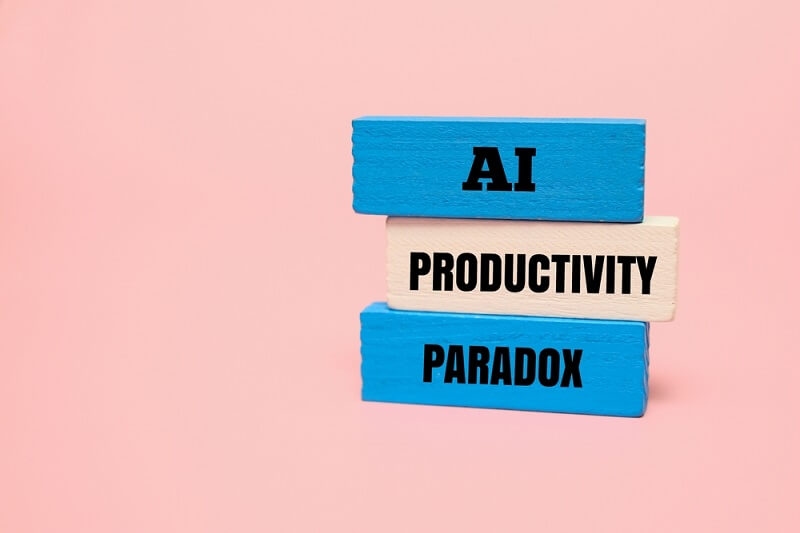The AI Industry Paradox: When Growth Meets Investor Collapse

The AI industry paradox is a strange one, isn’t it? On the surface, everything looks golden. Companies are scaling like never before, startups are raising millions, and AI tools, from chatbots to copilots, have become a part of our daily workflow. Yet, behind that shine lies a quiet tension: investors are bleeding money, valuations are sliding, and whispers of an AI investment collapse are growing louder by the week.
It feels oddly reminiscent of the dot-com era, when innovation outpaced sustainability. Only this time, the buzzwords are different, machine learning, large language models, generative AI, but the pattern? Almost the same.
The AI Industry Paradox: Growth That Breeds Instability
Here’s the tricky part. The AI sector growth vs risk debate isn’t about whether the technology works, it does, spectacularly. It’s about whether the economics behind it make sense.
Many AI startups operate on massive cloud costs, thin margins, and speculative revenue forecasts. Venture capitalists poured billions into “the next OpenAI,” expecting instant returns. But when profits didn’t arrive, the AI market valuation decline began to set in.
Ironically, the very companies driving the industry’s growth, like NVIDIA, Google, and Microsoft, also highlight its instability. Their AI divisions are thriving, sure, but smaller players are folding fast. It’s almost poetic: the same innovation that fuels growth is creating investor panic.
More to Explore: AI in Daily Life: Smarter Homes, Health, and Work
Why Investors Are Losing Sleep (and Money)
The numbers tell a story of their own. Startups once valued at $2 billion are now struggling to raise Series C rounds. Publicly traded AI firms are seeing stock prices dip by 30–50%. This AI investment collapse isn’t a total crash, at least, not yet, but it’s a sharp correction that’s shaking confidence.
Investor losses in AI aren’t limited to newcomers either. Seasoned venture firms that bet heavily on generative AI platforms are pulling back. Some compare this cycle to the “crypto winter,” where hype fueled an unsustainable surge.
Still, it’s not just about money. It’s about trust. Investors expected AI to rewrite the rulebook, not repeat it. And as one VC recently said in a podcast, “AI feels like the future, but the returns look like the past.”
The Bubble Nobody Wanted to Admit
Let’s be honest, there is an AI bubble burst in progress, even if people hesitate to call it that. Remember how everyone thought crypto would never slow down? The same kind of denial is lingering here.
Early-stage investors are realizing that building AI infrastructure is a long, expensive game. Cloud computing costs keep rising, regulatory pressures are tightening, and the gap between hype and real-world utility is widening.
And yet, strangely enough, the technology keeps improving. GPT models are smarter, image generators are more realistic, and AI assistants are now practically personal secretaries. That’s the paradox in action: innovation racing ahead while financial confidence falls behind.
The Hidden Cost of Progress
If you talk to engineers or researchers, they’ll tell you the AI industry paradox isn’t about failure—it’s about transition. The tools being built today are shaping what the next decade will look like. But for now, the commercial model feels unsustainable.
Think of it like building a skyscraper with the scaffolding still attached. It looks impressive, but it’s not finished. Many startups depend on foundation models owned by tech giants, meaning their independence is limited. And as costs grow, so does investor frustration.
The AI sector growth vs risk equation tilts heavily toward risk right now. Every breakthrough model requires millions in computing power, not to mention specialized chips and data infrastructure. That’s not a cheap playground for innovation.
Top Pick: Future of Autonomous Workflows With Agentic AI Automation
Who Survives When the Dust Settles

We’ve seen this story before, industries grow too fast, reality catches up, and only a few giants remain standing. The current AI market valuation decline could be the cleansing the sector needs.
The winners will likely be those focusing on sustainable applications rather than hype-driven features. Think of AI in healthcare diagnostics, supply chain optimization, or environmental modeling, areas where returns may take longer but last longer too.
Meanwhile, speculative ventures promising “AI for everything” are fading. The AI investment collapse is forcing companies to show real value, not just cool demos. It’s harsh, but necessary.
What This Means for Everyday Users
You might wonder, does any of this matter to people who just use AI tools? It does, actually. When funding shrinks, innovation slows. Products we rely on—like AI writing assistants or image generators—might become subscription-heavy or even disappear.
Still, it’s not all bad news. The coming correction might make AI more ethical, transparent, and accessible. Investors demanding accountability could mean fewer gimmicky apps and more meaningful solutions.
It’s a reminder that progress isn’t linear. Sometimes industries need to stumble before they find balance.
The Emotional Undercurrent: Hope and Hesitation
There’s something deeply human about the AI industry paradox. It reflects our constant tension between curiosity and caution. We want to believe in technology’s magic, but we also crave stability.
People are already asking: “Will there be another AI bubble burst?” Maybe. Or maybe what we’re witnessing is just the market maturing—learning to separate signal from noise.
Even investors who’ve faced losses in AI admit they’ll likely reinvest later. That’s the pull of innovation: once you’ve seen its potential, it’s hard to walk away.
The Road Ahead: Rational Optimism
So, where does this leave us? Somewhere between fear and fascination. The AI industry paradox isn’t going away—it’s evolving. The next wave of AI growth will depend on how wisely the sector learns from this turbulence.
If investors become more discerning, startups more practical, and companies more transparent, the AI sector growth vs risk balance might finally stabilize. That could lead to healthier competition, better valuation practices, and smarter innovation.
The AI market valuation decline we see now might just be the reset button the industry desperately needed.
You may also like: The Growing Future of AI: Trends and Breakthroughs
Closing Thoughts
Maybe it’s not really a paradox after all. Maybe it’s a natural correction—a necessary one. The AI investment collapse looks dramatic, but beneath the surface, it’s making space for genuine progress.
Like every technological revolution, this one’s messy, unpredictable, and thrilling all at once. The question isn’t whether AI will survive—it’s what version of it will. And that, you know, is where the story gets interesting.
This content was created by AI

